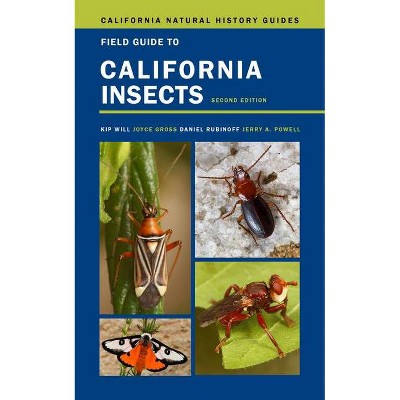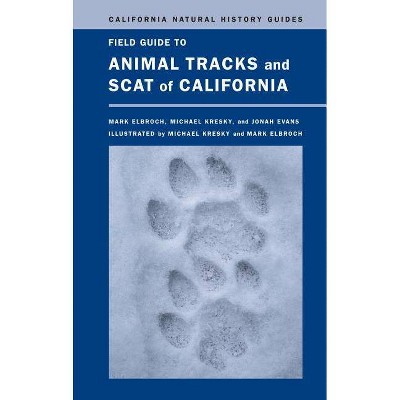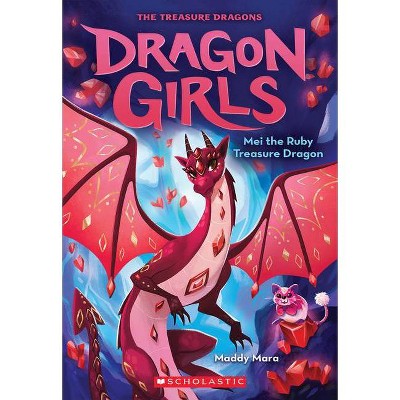A Natural History of Fairies - (Folklore Field Guides) by Emily Hawkins (Hardcover)

Similar Products
Products of same category from the store
AllProduct info
<p/><br></br><p><b> About the Book </b></p></br></br>"The original edition of this book, a volume dating from the 1920s, was discovered in the archives of the British Museum of Natural History, in a folder labeled 'Unverified.' Although the publisher has made efforts to track down Professor Elsie Arbour, no trace has been found of her. For this reason, the publisher cannot confirm the authenticity of the the books contents, so presents it merely as an item of interest"--Publisher note on title page verso.<p/><br></br><p><b> Book Synopsis </b></p></br></br><p><b>This enchantingly illustrated natural history of fairies, compiled in the 1920s by the botanist Professor Elsie Arbour for her niece, is now unveiled for readers of today. </b> <p/> Featuring a <b>gold foil-embossed cloth cover</b>, a <b>ribbon marker</b>, and <b>sprayed gold edges</b>, this gorgeous volume is filled with <b>colorful sketches and precise notes detailing the secret life of fairies</b> and their important role in the natural world. <p/> Inside, you will discover the wide and wonderful array of different species of fairies around the globe and explore where and how they live. Delight in this hidden world as you learn all about: </p><ul><li><b>The anatomy of a fairy</b> (Land-based fairies have individual, separated toes, just as humans do. However, many species of water fairies have webbed feet.)</li><li><b>The life cycle of a fairy</b> (When walking in the heather, be careful of the tiny flutterpillar of the Wicklow Fairy, decked out in greens and purples.)</li><li><b>Clever fairy camouflage</b> (Reed fairies living in wetlands usually wear striped clothes to hide among the tall reeds.)</li><li><b>Fairies around the world</b> (Meet the Lily Hopper of sub-Saharan Africa, the Queen Fairy of New Guinea, the Penguin Fairy of the Antarctic, and many more.)</li><li><b>Fairy habitats</b> (Fairies make their homes in all types of places: woodlands, jungles, deserts, the Poles, and even human homes.)</li></ul><p>Concluding with a reminder that we must protect the endangered habitats of fairies, and all other creatures too, this is a book to be treasured for a lifetime.</p><p/><br></br><p><b> Review Quotes </b></p></br></br><br><b>"A lovely volume."</b>--<i><b>Foreword Reviews</b></i><br><br><b>"A thoroughly charming, bewitching, enchanting, glamorous and enthralling read."</b>--<i><b>Midwest Book Review</b></i><br><br><b>"Worldwide in scope, thoroughly informative, teeming with relentlessly cute poppets."</b>--<i><b>Kirkus Reviews</b></i><br><p/><br></br><p><b> About the Author </b></p></br></br><p>Once a children's book editor, <b> Emily Hawkins</b> is now a full-time author. Her work has been featured on the New York Times bestseller list (<i>Oceanology</i>, 2009) as well as winning the Children's Travel Book of the Year Award (<i>Atlas of Animal Adventures</i>, 2016). Along with her background in children's non-fiction Emily has a strong interest in myth, folklore, and storytelling. In 2020 she wrote <i>A Natural History of Fairies</i>, published by Frances Lincoln Children's Books, an imprint of The Quarto Group, which has been translated into eleven languages. Emily holds a first-class English degree from Nottingham University, and lives in Winchester, UK, with her young family.</p></p> <p><b>Jessica Roux</b> is a Nashville-based illustrator and plant and animal enthusiast. She loves exploring in her own backyard and being surrounded by an abundance of nature. Using subdued colors and rhythmic shapes, she renders flora, fauna, food, and many other things with intricate detail reminiscent of old world beauty. Her first book with Frances Lincoln is <i>A Natural History of Fairies</i> (September 2020).</p></p>
Price History
Price Archive shows prices from various stores, lets you see history and find the cheapest. There is no actual sale on the website. For all support, inquiry and suggestion messages communication@pricearchive.us



















